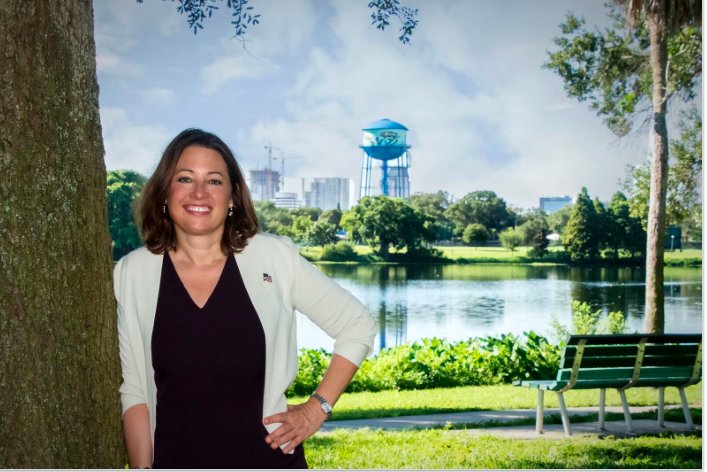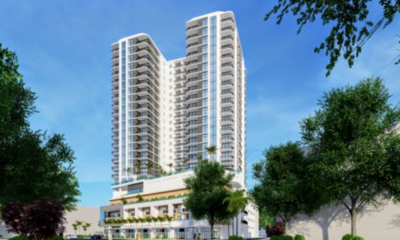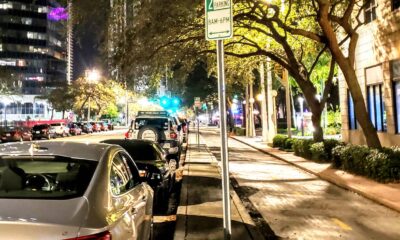New chair of Forward Pinellas combines passion for St. Pete with a regional focus

St. Petersburg City Council member Darden Rice has been elected the 2021 chair of Forward Pinellas, a countywide land use and transportation planning agency.
Rice will lead a 13-member board that could ultimately weigh in on key parts of StPete2050, a community-generated vision for where the city is going and what it can become over the next 30 years.
When St. Petersburg shines, so does the rest of the Tampa Bay area, Rice said in an interview with the St. Pete Catalyst.
“I’m a regionalist at heart. I completely believe that what you do to help one area achieve a better connectedness to our transportation grid, the better it is for all of us,” Rice said. “As our smaller cities work on their own transportation projects, we’re also looking at the big picture at how all these connect together in a better way.”
She is stepping down from the Pinellas Suncoast Transit Authority board to serve as Forward Pinellas chair, she said in a Facebook post.
When one hydraulic door seals shut, another one slides open. After 8 years of serving on the Pinellas Suncoast Transit…
Posted by Darden J. Rice on Friday, November 20, 2020
Rice began serving on the St. Petersburg City Council in 2014, and a year later joined the board of Forward Pinellas, a policy-making and planning agency consisting of Pinellas Planning Council and Pinellas County Metropolitan Planning Organization. She has been vice chair for the past two years.
One reason she was drawn to serving on the agency is because transportation issues are critical to quality of life in the community.
“Transportation is so connected to everything else — housing, economic development, environmental issues. I’ve always been interested in transportation policy because it deals with so many foundational issues, and frankly some issues that our county seriously needs to work on and make more progress,” Rice said.
She cited AVA, an autonomous vehicle that will get a trial run in downtown St. Petersburg, as an example of what more could be done in Pinellas County.
“We’ve been innovative in supporting a new technology and new types of transportation, but we still have a lot of room in finding funding for meaningful transportation and transit projects here in the county,” Rice said.
Transportation and mobility initiatives are among the 10 key themes that have emerged so far in StPete2050.
“We’ve gone through this StPete2050 process to hear from the public about what kind of community we want to live in, what kind of community we want to create. We did not go through this process just to have that report gather dust on a shelf. We are going to take a look at things in StPete2050 we can start to implement, and that means we start at the city level and the Forward Pinellas level to approve zoning changes,” Rice said.
One issue that could come up is a proposal to rezone the vacant area along 22nd Street South between 1st Avenue South and 6th Avenue South as industrial mixed-use. That’s a new zoning classification that would allow for modern industrial uses such as maker spaces, as well as office, residential and arts-related retail.
“We’re looking at a new way of approaching industrial zoning so that we have uses that are more modern to help support the successful models we already see developing in the Warehouse Arts District,” Rice said.
Transit-oriented development, or urban development that creates live-work-play spaces within walking distance of public transportation, also will be a key issue. SunRunner, the bus rapid transit project that will travel between downtown St. Petersburg and St. Pete Beach, advanced with the support of Forward Pinellas.
“It just makes sense that we would look at ways to tweak increases in density along corridors where we have transit. The SunRunner BRT will really help people get to work, to appointments, to events. It may mean that for younger people living in apartments downtown it could give them the option to go car-free. Or for the families that live within a half mile of the entire SunRunner BRT route, those families could have the option maybe not to have to buy a second or third car for their family as their kids get older,” Rice said.
While SunRunner will travel 1st Avenues North and South through St. Petersburg, the plan is to extend it city-wide and eventually in other parts of Pinellas County, Rice said.
“The SunRunner is going to be the first of what we hope to be many successful BRT projects in the county, including the next one connecting south St. Pete via 34th Street to areas north of Ulmerton. That will be huge and that will be successful too,” she said.
Working together
Because Rice advocates for regional approaches to key issues, she is on the lookout for potential threats to communities working together. She fears that could be happening at Tampa Bay Water. She also serves on the board of directors of that nonprofit special district that provides water for more than 2.5 million customers across Hillsborough, Pinellas and Pasco Counties, along with the cities of St. Petersburg, Tampa and New Port Richey.
Tampa Bay Water was created in 1998, after “water wars” erupted over the area’s water supply.
“One of the things that Tampa Bay Water did not anticipate 20 years ago would be the way that member governments could change how they use treated wastewater,” Rice said. “The challenge is that Tampa Bay Water is set up so that member governments don’t go out on their own and put money into their own water supply projects that then compete with Tampa Bay Water. It gets into the issues of the debt we carry together and agreements on rates.”
Fears of another water war came up following a recent $350 million proposal by the city of Tampa to pump treated wastewater into an aquifer to use for drinking water.
“You want to embrace technology and innovation and look at ways we can reuse wastewater in a better way. Some areas like California or Israel or Singapore have learned how to reuse wastewater for potable purposes, but they put years and billions of dollars into it. It’s much more than a $350 million project Tampa was coming up with,” Rice said. “If we go in that direction, we have to be absolutely sure of the studies in what we can do. We’re talking about putting a lot of money into an ancient aquifer and that’s not something you trifle with. You have to be absolutely sure that’s something that can be done. At this point I am not completely sold but I will keep an open mind as we continue to study it.”
There’s been a lot of speculation that Rice will run for St. Petersburg mayor next year to succeed Mayor Rick Kriseman, whose term expires in early 2022. She did not comment on that speculation directly, but said her commitment to regionalism is not at odds with her passion for St. Petersburg.
“St. Pete, clearly, with our arts, with being on the water, being near the beaches, we have so much to offer. Our city is on this incredible trajectory,” Rice said. “Where we start to get the greatest return on investment is when we work together to bring high quality jobs to this area, and then as part of that we support transportation so that everybody here has a way to get to those jobs.”







